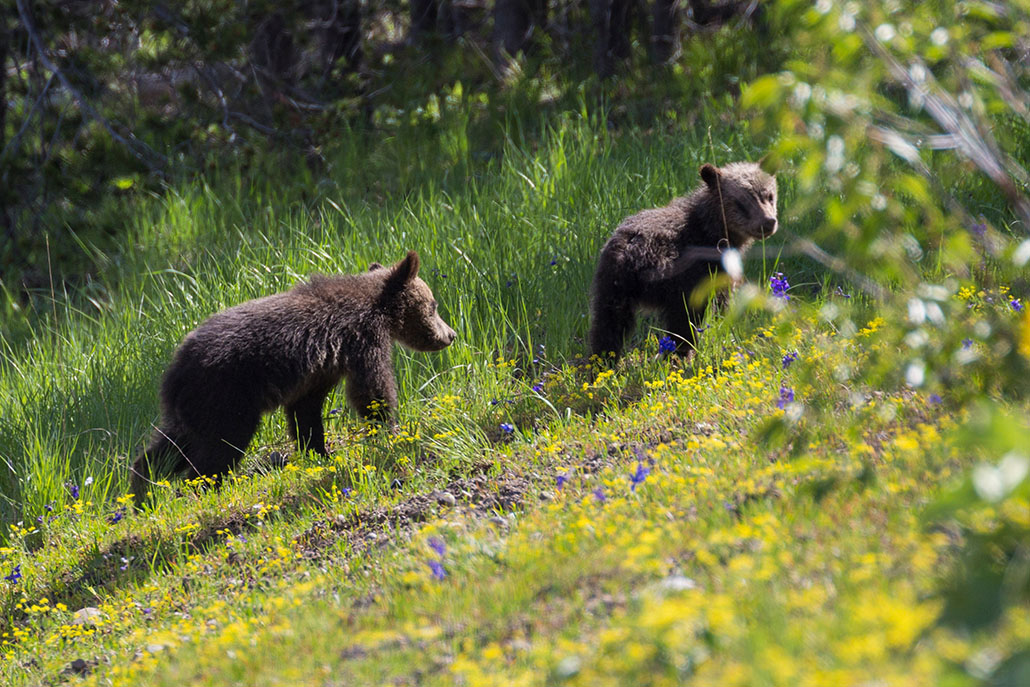
Yellowstone National Park is one of nature’s most captivating treasures, offering visitors the rare opportunity to encounter wildlife against a backdrop of breathtaking landscapes. Home to hundreds of animal species, including bears, bison, wolves, and elk, this iconic park is a sanctuary for wildlife enthusiasts looking to add a touch of wonder to their adventures. But with nearly 3,500 square miles to explore, knowing where to find Yellowstone’s diverse wildlife can make your visit more fruitful—and unforgettable.
Whether you’re an avid wildlife photographer or simply someone who loves watching nature’s creatures roam free, this guide highlights some of the best areas in Yellowstone for wildlife viewing.
The Lamar Valley – The Serengeti of Yellowstone
Nestled in the northeast corner of Yellowstone, the Lamar Valley is often referred to as the “Serengeti of North America” for its abundant and diverse wildlife. Open meadows and rolling hills provide the perfect habitat for large herds of bison, elk, and pronghorn antelope. If you’re lucky, you might even spot one of Yellowstone’s elusive wolves, which often roam the area in search of prey.
To make the most of your visit to Lamar Valley, plan to arrive early in the morning or near dusk, as these are the best times to catch animals during their active hours. Don’t forget your binoculars or a telephoto lens to bring the action up close while maintaining a respectful distance.
Hayden Valley – A Bison Lover’s Paradise
If bison are at the top of your wildlife bucket list, Hayden Valley is a must-visit. Located in the central portion of the park, this valley is renowned as a prime spot for viewing bison herds grazing, wading, and lazily crossing the landscape. It’s not rare to find yourself momentarily “stuck” in a bison traffic jam while driving through!
But Hayden Valley isn’t just about bison. Keep an eye out for grizzly bears, which are commonly spotted in the area, especially during spring when they emerge from hibernation. Bird enthusiasts will also delight in the variety of raptors and waterfowl that call the valley home.
Plan your visit during the golden hours of sunrise or sunset for the most magical lighting and heightened wildlife activity. Watching bison as the first rays of light illuminate the valley is a truly spiritual experience.
Yellowstone’s Bear Country – Dunraven Pass to Tower Junction
For those particularly fascinated by bears, the stretch from Dunraven Pass to Tower Junction is a well-known hotspot. Both grizzly bears and black bears frequent this area, drawn by its abundant food sources and natural habitat.
Spring and early summer are the best times to find bears in this region, as they are actively feeding after their winter hibernation. Look for them grazing in meadows or wandering through forests in search of insects and roots. Spotting a bear in the wild—always from a safe distance—is a sight that will stay etched in your memory forever.
Safety tip: Always give bears plenty of space and be sure to carry bear spray when hiking in bear-prone areas of the park. Better still, consider guided wildlife safaris, which ensure safe and enriching encounters under the care of experts.
Enjoy Exclusive Wildlife Experiences with a Guided Tour
Want to elevate your wildlife adventure in Yellowstone? Consider booking guided wildlife safaris for a more curated and intimate experience. Expert naturalists can take you to the park’s hidden gems, share fascinating insights about Yellowstone’s wildlife, and even help you identify animal tracks or subtle signs of animal presence that you might otherwise miss.
By joining a guided experience, you’ll have the luxury of relaxing and soaking in the surroundings without the worry of navigating the vast park. Plus, these tours often include high-quality spotting scopes or binoculars, allowing you to fully savor each breathtaking moment.
Frequently Asked Questions About Adventures in Yellowstone
What’s the best time of year to visit Yellowstone for wildlife viewing?
The answer largely depends on which animals you want to see. Spring (April through June) is excellent for spotting bears and newborn bison calves, while fall (September through October) is prime elk rutting season. Winter offers a magical experience with wolves and bison often more visible against the snowy backdrop. Regardless of the season, plan your wildlife adventure during the early morning or late evening for peak activity.
Can beginners safely explore Yellowstone for wildlife?
Yes, Yellowstone is beginner-friendly, but taking precautions is vital. Stay on designated trails, maintain safe distances from animals (at least 100 yards from bears and wolves), and always carry bear spray. If you’re unsure, opt for a guided wildlife tour to enhance your safety and experience while learning from experts.
At Rustic Inn at Jackson Hole, we are dedicated to helping you experience the wonders of nature in comfort and style. Nestled near Yellowstone and Grand Teton National Parks, our resort offers luxurious accommodations and personalized adventure planning. Make your stay unforgettable by booking with us today! Book now.
